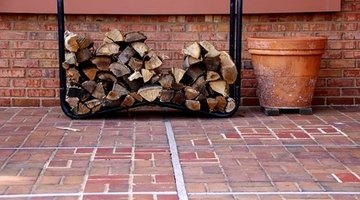What Can Be Used to Insulate Where Siding Meets Brick?
The area where siding meets brick usually has a gap between the two. This can be a major source of air leaks as well as an entrance area for pests such as termites and mice. According to the U.S. Department of Energy, sealing air leaks around the exterior of the home saves money on heating and cooling by reducing energy use.
Foam Sealant

Foam sealant is an expanding foam insulation product sold in aerosol cans. Similar to caulk, foam sealant forms an airtight seal to eliminate air leaks. But unlike caulk, foam sealants expand to fill larger gaps without having to install other forms of insulation, such as rigid foam, before use. Polyurethane foam sealant expands 50 percent to fill large gaps; newer latex foam only expands 25 percent for large gaps without as much risk of overuse or oozing.
The area where the foam sealant will be installed must be clean for proper adhesion to both surfaces. Clean the surface behind the siding and the brick with water and a stiff brush to remove all loose soil before using foam insulation where siding meets brick. Allow the area to dry before using expanding foam sealant unless the product directions state to moisten the area first. Overuse will result in the product overflowing from between the siding and brick. If this should occur, trim the excess after it has had time to dry according to the times stated on the product label. Use a sharp utility knife and peel off the excess.
Rigid Foam and Caulk
Rigid foam is a board-type insulation product. Sheets are available in a variety of thicknesses and may be more appropriate for insulating where siding meets brick. If the gap is large, it may be more economical to fill it with pieces cut to the proper width, glue them in place and caulk or foam the edge. This is likely a better choice on a larger house where there is a large number of feet around the perimeter where siding meets brick. The area will also require cleaning with water and a scrub brush for proper adhesion. Be sure all surfaces are dry before gluing the rigid foam pieces into position behind the siding. Measure the depth of the gap between the siding and brick and use this measurement to cut lengths of the rigid foam board. Glue with a multipurpose contractor's glue made to adhere to both masonry and plastic. Apply the glue to three sides and push the pieces of rigid foam board insulation into position between the siding and brick. Inspect the area after the glue has dried and apply caulk where needed to fill areas where there is not a tight connection between the surfaces and the insulation.
Writer Bio
Emily Patterson has been creating content for websites since 1996. She specializes in home improvement, natural body care and natural cleaning articles. Patterson holds a computing certificate from Penn State University.
Photo Credits
- firewood image by Joy Fera from Fotolia.com
More Articles



